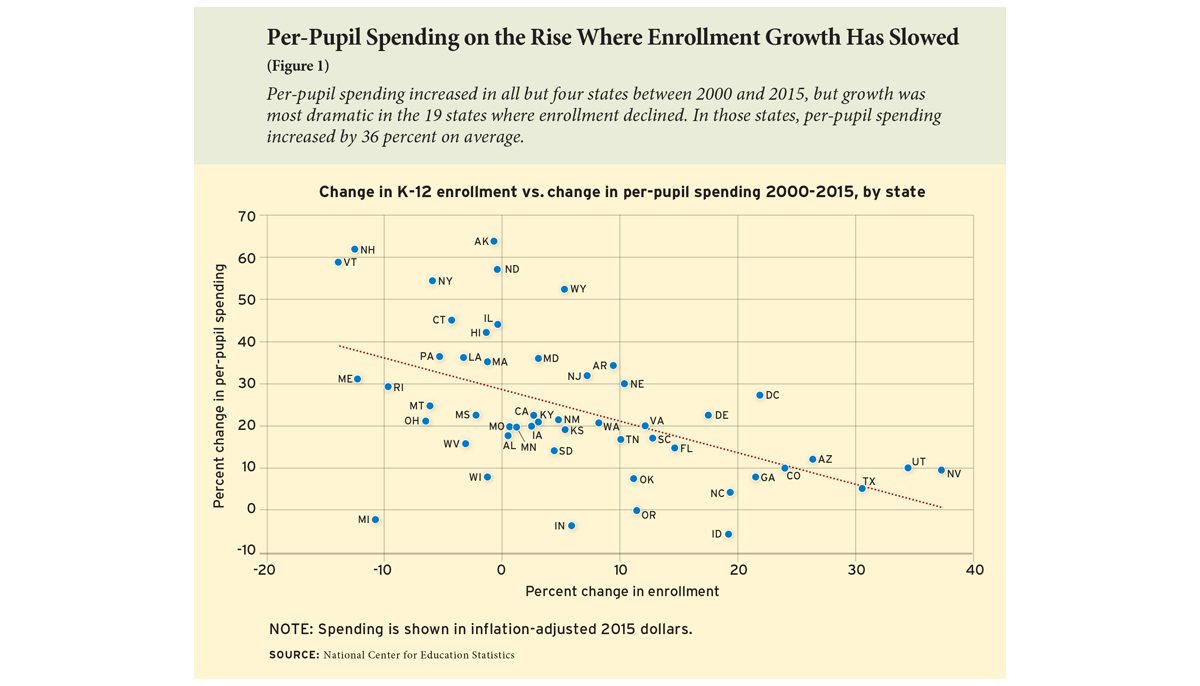
It’s not easy to surprise demographers, given the long timelines with which they work. But back in 2007, when the number of babies born in the United States hit the all-time high of 4.32 million, topping even the baby boom peak, few could foresee the baby bust that was about to come.
But come it did. By 2010, the number of children born in the U.S. that year had declined by 7.3 percent to 4.0 million. Perhaps that was understandable, given the shock of the Great Recession. (Birthrates declined during the Great Depression, too.) But another surprise followed: the birth rate continued to fall, even amid a historically long economic recovery, and even though the huge cohort of millennial women was reaching prime childbearing age. A decade after the peak, and seven years after the recovery began, the downward trend continues. The 3.85 million babies born in 2017 represent a 10.7 percent decline from the 2007 high.
As alarming as these raw data are, what concerns demographers even more is the downturn in the “total fertility rate,” which estimates the number of children the typical woman is likely to have over the course of her lifetime. From 2007 to 2017, that rate fell from 2.12 to 1.76—an astounding 17 percent decline. Anything under 2.1 means we’ve fallen below the replacement rate, indicating that, without immigration, population shrinkage will follow. And immigration rates are down somewhat, too.
All of this was so unexpected that official projections from the National Center for Education Statistics still predict a rise in enrollment in coming decades—an outcome that is virtually mathematically impossible. In fact, on average, student enrollment is falling, and fast. Using data from the Western Interstate Commission for Higher Education, the Hechinger Institute’s Jill Barshay predicts an 8.5 percent decline in the number of students in U.S. schools in coming decades, with drops already apparent in the early elementary grades.
If anything, Barshay is likely understating the magnitude of the decline. How low can the birthrate go? And what might this mean for public education and reform in the United States? Is this a crisis, an opportunity, or both?
Nobody knows for sure why the birthrate is slowing, though some explanations have more supporting evidence than others. Economist Lyman Stone, who has been raising the red flag about fertility rates for years, argues that it is mostly driven by delays in marriage. “Controlling for marital status, fertility in the United States has been roughly stable for the past decade and a half,” he writes. “Most changes in marital status, in turn, can be attributed to the increasing delay in young people getting married.” And that, in turn, may be attributable to a variety of economic barriers, from increased student-loan debt to rising housing costs to more expensive childcare. Fixing any of that is difficult, even in times of plenty. When the next recession hits, Lyman predicts, all this will only get worse.
The implications for society writ large are clear and mostly dire. Here’s how Jonathan Last, author of What to Expect When No One’s Expecting, put it in a Wall Street Journal op-ed:
Low-fertility societies don’t innovate because their incentives for consumption tilt overwhelmingly toward health care. They don’t invest aggressively because, with the average age skewing higher, capital shifts to preserving and extending life and then begins drawing down. They cannot sustain social-security programs because they don’t have enough workers to pay for the retirees. They cannot project power because they lack the money to pay for defense and the military-age manpower to serve in their armed forces.
If he’s right, all of this will put new pressures on our education system. Schools in most states have already entered a “new normal” of slow growth in revenue, sparked by the Great Recession but persisting to this day. As “investments” in the future become even harder to support politically, the fiscal picture may grow worse. Then there’s our own version of the retiree problem: our teacher pension and retiree health-care economics depend on revenues from newly minted educators to stay solvent. We’re already seeing significant stresses on that strategy. What will happen when the demand for new teachers plummets? And no superintendent enjoys shuttering schools because of declining enrollment; such closures can leave communities angry and desolate.
One might also expect all of this to make the politics of education reform significantly tougher. It’s always been easier to advocate for charter schools and other forms of parental choice in areas that are growing rapidly; new choice options can serve as a release valve for districts struggling to keep up with an influx of additional kids. Fighting for choice in the midst of declining enrollment, on the other hand, is more akin to a street fight. Ask charter advocates in places like Detroit and Cleveland, for example, where even high-quality charter schools go wanting for enough students. Or in Denver, where the charter politics shifted dramatically when the city’s enrollment trends went from positive to negative.
But perhaps this sky-is-falling attitude is incorrect, or at least incomplete. Perhaps there are a few silver linings.
For one, fewer students could mean needing fewer teachers, giving districts a chance to be more selective in those they hire. Reform efforts over the past decade have paved the way: during the Michael Bloomberg-Joel Klein era in New York City, for example, the district reformed the tenure process and turned a rubber stamp into a serious effort to determine whether a junior teacher had demonstrated her effectiveness in the classroom. Districts nationwide could embrace a similar approach, especially if they are freed from the ongoing challenge of just finding enough bodies to fill classrooms.
Second, districts faced with school closures could also make smarter choices about which schools get to stay open. Rather than just shutter schools in the oldest buildings, they could mothball the lowest-performing programs, or the most segregated ones, or both.
They might also be able to afford to spend more money per pupil, since there will be fewer pupils overall. A skeptical reader might assume states and districts would immediately look to cut back on school spending as student enrollment declines. But consider Figure 1, which shows the relationship between enrollment trends and per-pupil spending by state from 2000 to 2015.
For the most part, states with declining enrollment boosted their spending per child more than states with enrollment growth. (There are interesting outliers, like Michigan, where economic implosions made this much more difficult to do.) With a declining student population, states can increase funding per pupil without ballooning the total education budget. That might prove politically salable, even in the face of competition from retiree spending.
While demography may be destiny, no outcome is inevitable. By choosing wisely, policymakers and education leaders can keep the baby bust from wreaking havoc on our schools. Our future is in their hands.
Mike Petrilli is president of the Thomas B. Fordham Institute, research fellow at Stanford University’s Hoover Institution, and executive editor of Education Next.
This article appeared in the Summer 2019 issue of Education Next. Suggested citation format:
Petrilli, M.P. (2019). The Baby Bust Goes to School: Are falling birthrates a crisis or an opportunity? Education Next, 19(3), 82-83.



